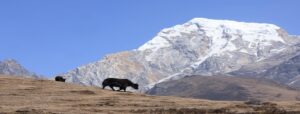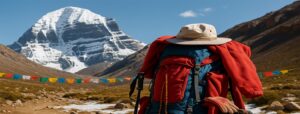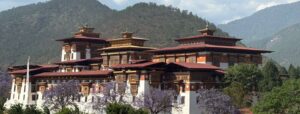Langtang National Park is among many mesmerizing places that include all of the beautiful attractions like mountains, streams, lakes, landscapes, wildlife, and many more.
Highlights of the Langtang National Park
Langtang National Park is an amazing destination for people who love to be immersed in the beauty of nature. It is home to elegant flora-fauna and many innocent yet amazing animals.
The major ethnic groups that inhabit the Langtang region and its buffer zone are the Tamang, Yolmo, and Bhotia. These ethnic groups are thought to have originated in Tibet. The Bon religion, a pre-Buddhist ideology popular in Tibet, is practiced by the ethnic groups residing here. The majority of people in this region practice Buddhism, notwithstanding the prevalence of Hindu spectrums and religious mythology.

North-central Nepal’s Langtang National Park is a national protected area. It was the fourth protected area in Nepal and the first Himalayan national park when it was founded in 1976. In the districts of Nuwakot, Rasuwa, and Sindhulpalchok settling in the middle of Himalaya, it encompasses 1,710 km².
To preserve the area’s distinctive plants and animals, Langtang National Park was founded in 1976. In the Central Himalayan Region, it is the closest national park to Kathmandu, the nation’s capital. The park’s 1710 square kilometers cover portions of the districts of Nuwakot, Rasuwa, and Sindhupalchok, which are located in the southern hilly region of the border between China and Nepal (Tibet). A buffer zone was declared in 1998 over 420 square kilometers inside and outside the park. Rich in biodiversity, the park stands as a meeting point between the Palearctic and Indo-Malayan realms. The local communities and the park office use the buffer zone management as a joint venture.
Langtang National Park’s Major Attractions
- Langtang National Park.
- Diverse Floral and Faunal.
- Rich in Tibetan Buddhist Culture and Traditions.
- Holy Religious sites.
- Panoramic view of Mt. Langtang-Ri, Langsisa, Langtang Himal, Ganjala peak.
- Glimpses of Tamang Culture and Heritage.
Things to Do at Langtang National Park
Mountain sightseeing
The park area is surrounded by the Langtang mountain range, with peaks like Langtang Lirung, Dorje Lakpa, and Ganesh Himal.
Also Read: Things you don’t know about Khaptad National Park
Langtang Lirung (7245 m) and Jugal Himal (6989 m) are the two main peaks of the Langtang. Although there are many things to explore in Langtang, Langtang Valley, Gosaikunda, and Helambu are the main hiking destinations and easily accessible locations. These locations provide a variety of trekking routes, each of which offers a unique set of experiences.
Explore Langtang National Park Biodiversity
The Langtang National Park serves as an exquisite home for the local flora and fauna. Visiting here gives you the chance to explore the breathtaking Himalayas, meadows, glacial lakes, and breathtaking panoramas of Nepal’s Langtang region.
Get to know the Diverse Culture of the Langtang Region
Another important major attraction that pulls visitors to Langtang is the way of life and culture that has been impacted by the Tibetan settlement.

The communities of Tamangs, Bhotia, Yolmo, Brahmin, Chhetri, and Gurung live in Nepal’s Langtang region. Nepal boasts an incredible natural settlement with a wide range of geographical variances, inclusive of Langtang, which showcases the country’s remarkable diversity.
Visit Panch Pokhari
Another major attraction of Langtang is Panch Pokhari, which means “five lakes.” It is well-known for its breathtaking scenery. This lake has religious significance for the Hindu people.
You may also like: Sagarmatha National Park
During Janai Purnima, a lot of pilgrims come to Panch Pokhari. Paachpokhari is surrounded by mesmerizing views of Makalu Mountain, Kanchanjunga, Gosaikunda, Jugal Himal Range, and Rolwaling Range.
Accommodation
There are plenty of lodging options in the Langtang trekking regions because locals are invested in the lodging business and therefore own small hotels, homestays, and lodges. Yet, if you wish to camp in this area we also provide camping facilities in some areas of Langtang, nonetheless, local authorities may forbid camping in the national park region.
Flora and Fauna
Alpine and subtropical climates can be found in Langtang National Park and the surrounding area. The park itself has incredible vegetation and wildlife, as well as a rich range of flowers and animals. In
Nepal’s Langtang National Park, the sal (Shorea Rubusta), Chimaune (Schima Wallichii), Chirpine, and Nepalese alder are widely distributed. The subtropical regions of Langtang National Park are home to Amazing Hemlock, oak, Silver fir, larch forest, and rhododendron species.

There are many different types of rhododendrons in the area’s superb alpine pastures and meadows. The region’s high-altitude meadows serve as the Himalayan Tahr and Musk deer species’ ideal summer habitat. Along with these animals, the park is home to over 250 different types of birds, including red pandas, clouded leopards, wild dogs, gorals, and serows.
Climate
Natural wonders abound from September to May, ranging from breathtaking old-growth forests and glacier-carved cliffs bordered by snow-capped peaks to lush, temperate river valleys with shrieking langurs. Apart from January through February, when snow is possible, the weather is also often dry.
The best time to visit
To visit the Park, autumn is the ideal season. Rhododendrons reach into towering canopies of oak and fir forests by April, punctuated by bursts of color in shades of pink and red. The Yak and Chauri herds move up to higher altitudes when the weather warms, occasionally setting up camp on the pasturelands by long-standing customs.
Popular: Langtang Trek Festival: A Journey into Tamang Culture
Autumn (September to late November) offers excellent clarity, and spring (February to mid-April) offers breathtaking views. Traveling here in the winter, from December to January, is another alternative if you are not a “peak-season traveler” and have sufficient warmth. Nepal’s winters are rather cold rather than snowy. But one benefit of visiting the Langtang National Park this season is that there won’t be any crowds.
Kathmandu To Langtang National Park
Nepal’s Capital city, Kathmandu is not very far from Langtang National Park. There are many routes to explore this limitless place of natural biodiversity. From Kathmandu, it takes four hours by vehicle to get to Langtang National Park (202 km).
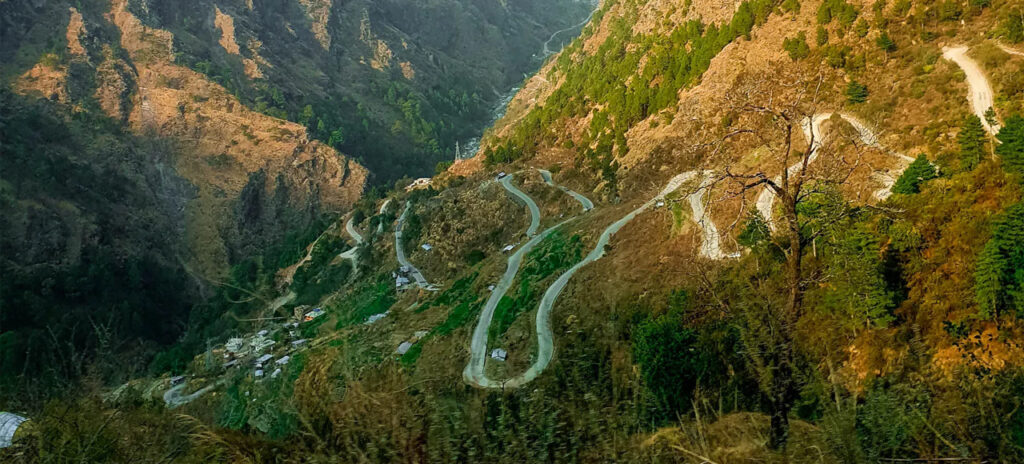
Early morning busses from Machhapokhari, New Bus Park in Kathmandu, depart for Syabrubesi in Langtang National Park between 7 and 9 a.m. The cost of the ticket is between Rs. 1,000 and Rs. 1,200.
Cost (approx.)
The cost of the Langtang Valley trip, which lasts 10–13 days, can vary from USD 700 to USD 1500 per person accordingly. The cost also differs between travel agencies. You may be charged approximately USD 700 by some travel agencies and over USD 1500 by others.
Major attractions
- Panoramic view of mountains
- Explore the diverse wildlife, rich culture, and historical importance
- Seasonal rhododendrons of beautiful colors
- Mesmerizing views from the viewpoint in Tserko Ri
- Explore the Tibetan lifestyle and local inhabitant’s Tamang culture
- A Glimpse of Gatlang Valley
Famous Treks in Langtang Region
Langtang Valley and Tamang Heritage trek
Discover the unique Tamang culture and legacy by traveling through Langtang Valley with the Tamang Heritage Trekking package. Rich in Flora & fauna, the Langtang Valley has unique cultural and historical significance. Langtang Valley is a well-known “valley of glaciers”.
More: Best Time to do Manaslu Circuit Trek
Undoubtedly, the breathtaking vista of pine trees, rushing mountain streams, jagged rocks, and mountains will leave you with unforgettable memories. By the end of this trek, you are sure to get a clear vision and understanding of Tibetan ancestry. The majority of this region is influenced by Tamang Heritage, thus you will get to know the way of their living, clothing, and many more.
Gosaikunda Lake Trek
Moderate in nature, Gosaikunda Lake Trek is an adventurous trek that gives you a chance to experience a mesmerizing lake view surrounded by gigantic mountains accompanied by diverse flora & fauna.
Pilgrims who practice Buddhism and Hinduism both consider the Gosaikunda as a holy site. There are several legends about the lake’s creation. A widely accepted account states that both gods and devils attempt to draw immortality from the water.
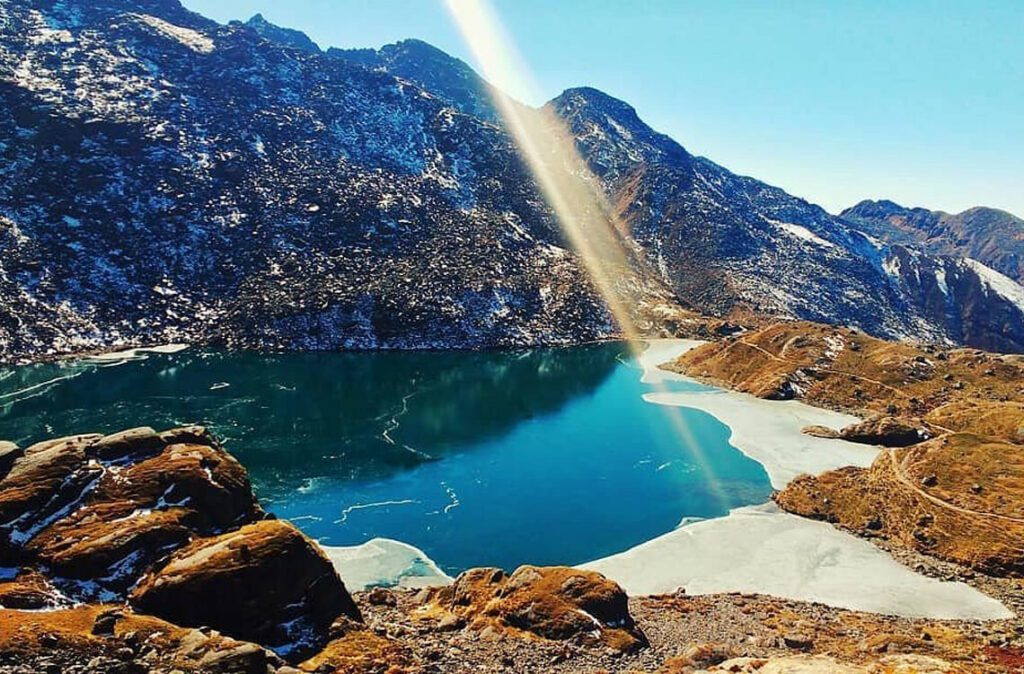
Consequently, the decision was made by both sides to cooperate and distribute the immortality elixir. A later practice was Samudra Manthan, or the churning of the seas, by both gods and demons. Precious stones, creatures, gold, silver, Goddess Lakshmi, Dhanvantri, and other items came up out of the water and were split between the gods and the devils during the churning.
Langtang Valley Trek with Ganja La Pass Trekking
Langtang Valley Trek with Ganja La Pass Trekking offers you an adventure trekking in the well-known Langtang and Helambu Valley via the Ganja La passes (5,122m). Connecting to one of Ganja-La’s most difficult passes, this trek provides a once-in-a-lifetime experience in the Langtang region.
Read: Learn Everything about Langtang Trek Permits
Along with providing breathtaking views of the Langtang Himalaya range and daybreak, Tserko RI (4,985m) is a worthwhile trek.
Let our expert team at Asian Heritage Treks and Travel take care of everything — from guided tours to personalized packing tips and travel arrangements.
Plan a fun adventure




